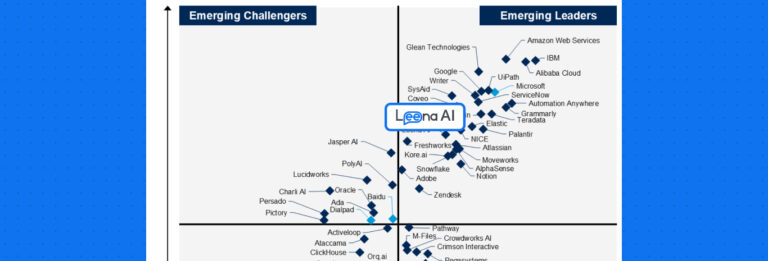Remember what joining a new organization looked like before the pandemic? You’d walk into an office, either be greeted to or walk to the HR and then the introduction to everything and everyone would begin.
Having someone by your side during these introductions always made it simpler to go through the first couple of days and strike conversations with those who would soon become your team members.
But the pandemic has changed the entire landscape drastically. There is no more ‘human’ touch to onboarding – plenty of messages, calls, emails, and virtual meetings though, that leave you feeling more exhausted about the new role instead of excited.
In this blog, we’re talking about the changing landscape of employee onboarding and how HRs have adapted to this new way of working (and living) to bring back its effectiveness.
The current state of employee onboarding
According to a survey we conducted, 64% of respondents have indicated that their organization is planning to hire talent in the coming year. The same survey also found that for more than 52% of organizations, the onboarding period is about a month or more, depending upon the role hired for.
But this is exactly the period where the shortcomings of HR came to the forefront. As per the Society of Human Resource Management, a survey of 2,278 members, stated that 2 in 3 employers say maintaining employee morale is a challenge. Especially when you’re onboarding a new employee.
The COVID-19 pandemic forced HR professions to rethink employee communication at various stages of onboarding.
While some organizations offered clear, concise, and continual communication to transition their employees into a hybrid or remote working, many others were slow to respond, leading to a 15-17% attrition rate and about 11% drop-offs even before a new employee joined the organization. Read ‘2022 – State of Employee Onboarding in the US’ to know the detailed landscape of employee onboarding.
2022 - The State of Employee Onboarding in the US
Download reportThe most common challenges faced in employee onboarding were:
- Low engagement
- High turnover
- Low productivity
- High attrition rate
Five ways the pandemic has changed employee onboarding forever
The HR department mostly relied on face-to-face communication and physical interactions to onboard new hires, including some stages that fall under recruitment and talent acquisition.
But to address the challenges faced during the pandemic, the HR department across fast-growing organizations started adopting HR technology. From recruitment to talent acquisition and eventually onboarding the right hires, HRs did not just move to virtual mediums to communicate proactively but also started to leverage technology that helped them automate most of the communication so that they could focus more on the human aspects of onboarding – building interpersonal relationships.
Adopting cloud-based technology
As per an ISG Survey, companies accelerated the adoption of cloud-based HR platforms amid the pandemic. About 46% of organizations are now using HR SaaS platforms, up from 20% from two years ago.
The integration of cloud-based HR technology into operations is enabling HR to recruit faster and in a more methodical way, ensuring proper onboarding alongside. It is also giving them access to insights such as employee engagement, sentiment, and satisfaction, helping them optimize the onboarding process for better results.
The State of Employee Onboarding Survey also found that 50% of organizations have shifted to online applications for virtual onboarding after COVID-19.
From tools to manage applications, communicate or set up onboarding processes on, HRs have moved to virtual mediums.
Leveraging automation in HR
Another shift in HR is from manually attending to employee onboarding needs to letting automation take care of it all. From timely communication with applicants to onboarding the right talent and walking them through the entire process of documentation, introduction to the role, and other steps, onboarding automation is being explored by HR professionals proactively.
Some of the use cases we are seeing HR professionals explore with onboarding automation include the following:
For example, HRs are seen experimenting with chatbots in many different ways, such as an automated knowledge base, employee onboarding, collecting feedback and assisting teams, conducting work from home surveys, helping with employee onboarding, and more. Read all about HR chatbots here.
Bringing in AI to automation
According to the State of Onboarding Report, about 92% of HR professionals are very familiar with artificial intelligence in the onboarding processes at organizations. In fact, 90% stated that adopting AI into onboarding automation is very important for an organization’s future and efficient HR functions in the current hybrid and remote working environments.
A couple of reasons for the HR departments to actively explore artificial intelligence in onboarding automation include:
Simply put, HR professionals are bringing AI into onboarding to add a layer of data processing over automation. It is helping them understand the smaller nuances of onboarding in a better manner, helping them optimize the entire experience for every new hire, at scale.
Focusing on employee experience alongside onboarding
One of the biggest shifts the pandemic has brought to employee onboarding focuses on the experience. Instead of only focusing on introducing a new hire to the job role, getting them set up for work, and introducing them to the team, HR professionals are also paying close attention to how they “feel” during it all.
The new-age HR is leveraging technology to automate employee feedback at every stage of their lifecycle with an organization, right from the point of talent acquisition. This is enabling them to address the challenge of low employee engagement and high attrition rates early on, bringing in processes to help employees feel more comfortable and involved.
This in turn is helping them:
- Increase the drive for innovation
- Attract better talent
- Reduce employee turnover
- Increase employee engagement
- Foster better employee well-being
- Help employees grow as professionals
- Create better manager-subordinate relationships
- Encourage employees to be more transparent
Read more about what employee experience is, why it matters, and how it adds value to your organization in the long run.
Bringing in Diversity, Equity, and Inclusion
Another aspect that HR professionals and organizations are paying close attention to is bringing in diversity, equity, and inclusion; especially with access to a global talent pool. Giving employees an equal opportunity across all levels in their job roles as well as ensuring they feel comfortable with more diversity in terms of demographics, is a part of the shift to ensuring a good employee experience at an organization.
Contrary to how hiring pools often were restricted by certain demographics, this shift caused by the pandemic is a welcome change in the landscape. It is also helping organizations address discrimination more proactively even in hybrid work setups.
The way forward is personalizing employee onboarding at scale
The five shifts in employee onboarding caused by the pandemic are indicative of how the HR department is capable of leveraging various technologies to optimize its processes.
The way forward from here is all about leveraging powerful technology like artificial intelligence to not just automate day-to-day and recurring tasks like conducting surveys and document management but also get insights from the data being collected at different stages. And using the data to identify loopholes, roadblocks, and opportunities to build intuitive workflows focused on employee engagement and experience.
It’s time to transform your new hires from candidates to advocates of your organization and get recognized as a company that didn’t slow down owing to the change of work environments and models. Start automating employee onboarding with AI.









4 Comments